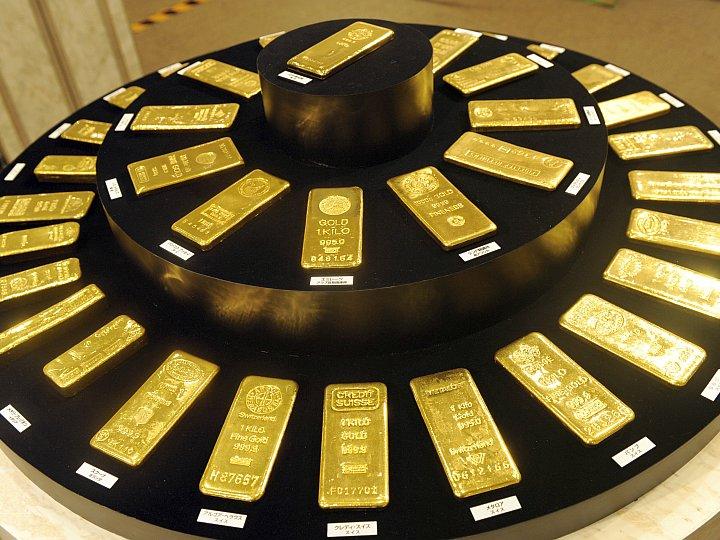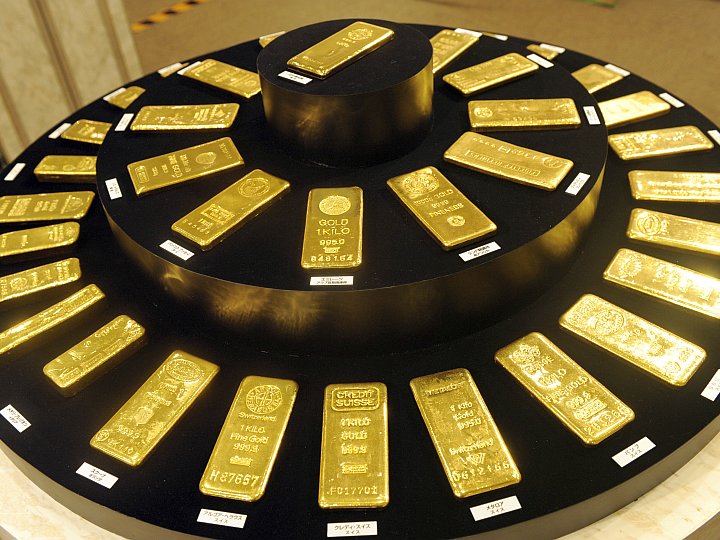The price of gold was heralded to hit and then exceed the $1,700 per ounce mark during 2012 and then continue to hover above that amount. True to its word, the price of gold hit a 2012 high of $1,791.75 on Oct. 4, after which it ebbed and flowed, ending at $1,657.50 on Dec. 28, the last historical data listed for 2012 on the Kitco website.
On Jan. 2, the price of gold was recorded at $1,693.75 and again ebbed and flowed for the first two weeks in 2013, staying below $1,700 per ounce.
Voices warning against investing in gold at its present price per ounce are getting more insistent.
“Even though many fundamental reasons seem to support gold prices rising from here, they are outweighed by the enormous amount of overspeculation and the limitless number of faulty arguments that point to a dangerous investment with much downside,” a Jan. 8 article on the Seeking Alpha website warns.
A Dec. 31, 2012, article on the Seeking Alpha website also gives warning to those who are still ardent gold investors. “For about a decade now, gold … has been shining. But just like ordinary people, investors often neglect history. And when someone doesn’t study history, he or she is apt to repeat mistakes of the past.”
The article suggests that gold peaks and then declines, just like any other type of investment. Historical evidence provides ample proof that when investors bought gold at its peak, they lost their shirts when gold prices declined.
According to Kitco historical charts, the cumulative average price per ounce of gold was $612.56 in 1980. In 1981, the cumulative average dropped to $459.71, moving downward to $375.81 in 1982. In the following years, the cumulative average moved up and down, but did not achieve anything close to the 1980 level per ounce. Beginning in 1998, the cumulative price per ounce of gold remained below $300 until 2002, when it then reversed direction and started to move up again.
“Gold was a sensible investment in the early part of the bull market (1999–07), but has now become a false sense of security for many investors who will soon learn the hard way. … The reasons for gold’s incredible danger are so numerous, but can be grouped into four main categories,” the Jan. 8 Seeking Alpha article cautions.
Gold Price Fundamentals
The first category according to the Seeking Alpha article is the parabolic price increase. The parabolic indicator is a method designed by J. Wells Wilder. In that scenario, if the stock trades lower than the parabolic stop and reverse (PSAR), the investor should unload it and purchase it once it is above the PSAR. The PSAR is a benchmark used by traders that forecasts the direction an asset will take and when the direction might reverse itself.
The second category is overspeculation, indicating that investors are willing to take great risk in buying gold or any other investment. A third problem is the massive publicity with financial websites and media discussions addressing gold issues daily. The fourth category is extreme expectations, which arise from the feverish announcements by the media, financial planners, and investor informational sites on daily gold movements.
“Put simply, with prices soaring since 2001, extreme risk-taking and over-enthusiasm by gold buyers, lack of hedging by the miners (GDX), and a false reliance on gold as a ’safe haven,' it at least pays to be cautious. … It appears that gold was a smart bet 10 years ago, but is now just a deceitfully dangerous investment for those who buy into a tremendously overcrowded trade. Gold is an illusion of safety in an uncertain world,” the Seeking Alpha article suggests.
Unbiased Look at Gold Prospects
Providing an unbiased view on the future of gold is not easy. “This is obviously a difficult task, and a bearish conclusion flies in the face of a 12-year trend that’s seen gold rise from $250/oz [ounce] to almost $1,900/oz,” a Jan. 6 article on the Seeking Alpha website states.
The Seeking Alpha article suggests that if gold’s upward trajectory halts and reverses its trend, “a major shift in the underlying fundamentals will have to take place.”
It appears that a shift in one underlying fundamental is taking place. Before the end of November 2012, gold seemed to move up “in sync with ‘risk assets,’ or economically sensitive assets,” according to the aforementioned Seeking Alpha article.
A risky asset is an asset in which gains and benefits are not guaranteed, while economically sensitive assets are assets such as stocks and high-yield corporate assets.
However, by the end of November 2012, the trend of gold moving in sync changed to the inverse, and it started to move opposite to the risky and economically sensitive assets.
“This new negative correlation [as described above] is a major development if it holds. Perhaps even more telling is gold’s failure to find support given the relative strength of this recent rally,” the Seeking Alpha article cautions.
Apprehension About Gold Demand
In a draft report of its Working Group on Gold, released Jan. 2, the Reserve Bank of India (RBI) states, “The imports of gold by India have been rising unabated in recent years notwithstanding the sustained increase in gold prices. Such large import of gold, when the gold prices are ruling high is one major source of bulging trade deficit.”
The RBI report suggests that India no longer produces gold in significant amounts, and the majority of the increase in the country’s gold is due to importing from abroad.
India’s government will examine its import duty for gold, and as it has in the past, the likelihood for another increase is no longer just a rumor. The RBI report suggests a list of options, including laws that prohibit banks from providing loans for gold imports, implementing tax incentives that would entice Indians to turn over their gold holdings, as well as the recycling of scrap gold.
A Jan. 15 Seeking Alpha article suggests that market experts discussing a decline in gold sales have not done their homework. To remedy this, the writer did a thorough analysis of gold demand and states, “The demand of gold/silver is not only unequivocally not in decline, it is in fact globally getting even stronger.”
The article points to historical data for periodic declines and increases of gold purchases, which should be used to discuss the demand for gold. It states that the major demand for gold came from Asian countries, including India.
Although the article suggests to take advantage of short-term trading opportunities, it ends with the caveat, “As always, do your own diligence.”
The Dec. 31, 2012, article on the Seeking Alpha website suggests that industries that use gold in production, such as the jewelry, industrial, dental, and electronics industries, curtailed their purchase of gold. In those industries, the gold demand has been down since 2011, yet the overall demand for gold was up during 2011. The growth in demand was from investors who kept purchasing gold.
However, “physical bar demand, for example, has been declining ever since Q1 2011. The same goes for coins. The big surprise, however, is ETF [Exchange-Traded Fund] demand for gold. There has been a steady decline ever since 2009. … As of Q3 2012, year-over-year demand for gold is down across the board by -11%,” according to the Seeking Alpha article.






Friends Read Free